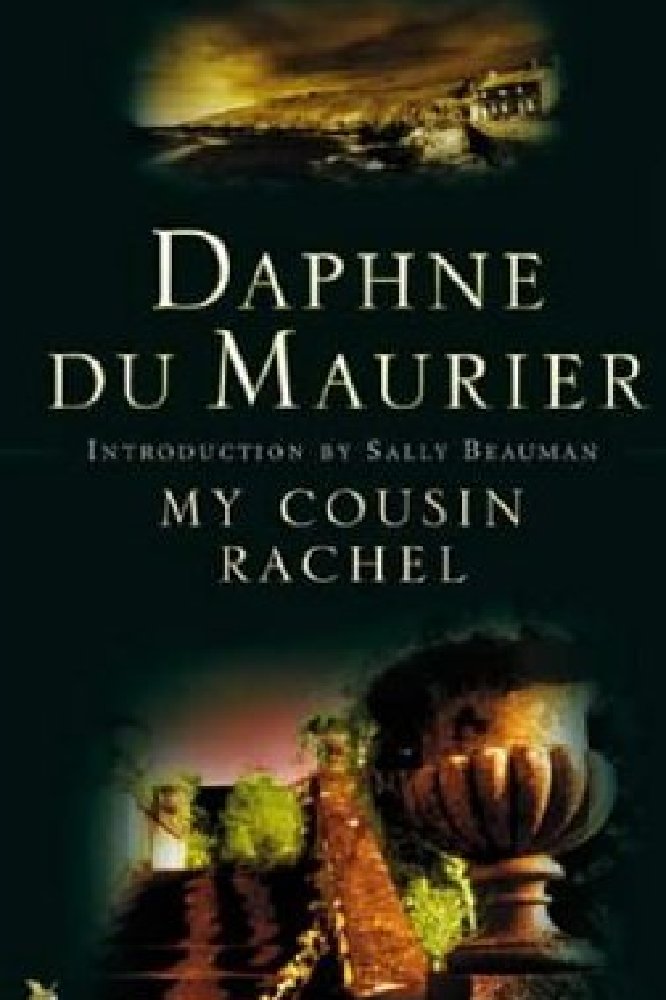
My Cousin Rachel
As one of the most acclaimed and accomplished female authors of the early twentieth century, Daphne du Maurier used all of the imaginative and technical skill that made Rebecca a critical and commercial success in the 1930’s to further excite and shock her readers with My Cousin Rachel.
We first encounter Phillip Ashley, our narrator, at the conclusion of what appears to have been a rather dramatic series of events. He takes us back into the past through his recollections of childhood, being raised by his cousin Ambrose, who has led the contented life of a wealthy bachelor for many years. At the age of twenty-three, happy in the security of his position as the heir to Ambrose’s estate in Cornwall, Phillip’s world is suddenly uprooted and transformed when confronted with wider European culture in the form of Rachel, a distant cousin and, to the shock of his Cornish acquaintances, Ambrose’s new bride. Having been advised to move to drier climates in the winter months for the sake of his health, Ambrose meets Rachel in Florence, where she was born and raised, and it is there that they begin their married life. Phillip’s concern for his guardian increases when his letters become increasingly erratic in tone, bearing accusations that Rachel is not who she initially appeared to be. Eventually, Phillip decides to travel to Florence to discover the truth for himself, but he is too late: Ambrose is dead, and Rachel has left Florence with all of their belongings. Phillip, having vowed revenge on the woman he blames for his guardian’s death, invites her to his home, a decision which has unexpected, tragic consequences for all involved.
The Gothic Cornish setting, themes and plot familiar in du Maurier’s writing are present in My Cousin Rachel, but it is in the characterisation that her skill as an author shines through. In a novel that centres on nineteenth and twentieth century masculine concerns such as marriage, inheritance and the management of estates, the character who most intrigues and excites our attention is a woman – Rachel. Who is she? What is the true nature of her relationship with her mysterious adviser, Rainaldi? Was it really a brain tumour that claimed Ambrose’s life, or did Rachel play a sinister part in his death, in an attempt to make a claim on his wealth?
The answers to these questions are never fully revealed, for Phillip’s ever-changing attitude towards Rachel undermines all of our attempts to understand her. Rachel is wicked, dangerous, innocent or loving according to how Phillip perceives her at any given time. One moment, she is a beautiful, domestic goddess; the next, a sinister seductress, bewitching those around her with her feminine charm. Which leads us to question whether any of the accusations directed towards her justified, or are they just a product of male imaginations mistrustful of women? Though we are aware of the losses he has suffered so early in life, Phillip becomes increasingly possessive as the book progresses. For Rachel is not merely ‘Rachel’ to Phillip; he refers to her as ‘my cousin Rachel’ for most of the book. She is his property, just as the house, the estate, and the land are his property. For many reviewers, this subtle attempt to divert our sympathies from Phillip to Rachel makes My Cousin Rachel du Maurier’s most feminist novel.
My Cousin Rachel is not a particularly long book, which means that there are rarely places where it loses pace or dramatic tension. Some events or characters may seem cliché or melodramatic, but this doesn’t detract from the overall intrigue and enjoyment that this novel offers. The well-placed cliff-hangers, the mystery surrounding the characters and events, and the almost fairy-tale-like setting excites and enthrals you, making it almost impossible to put down. As one mystery seems to be explained, another one comes to light - du Maurier leaves you impatient for more even as you read the final words of the book.
By Anne-Marie Heeney

